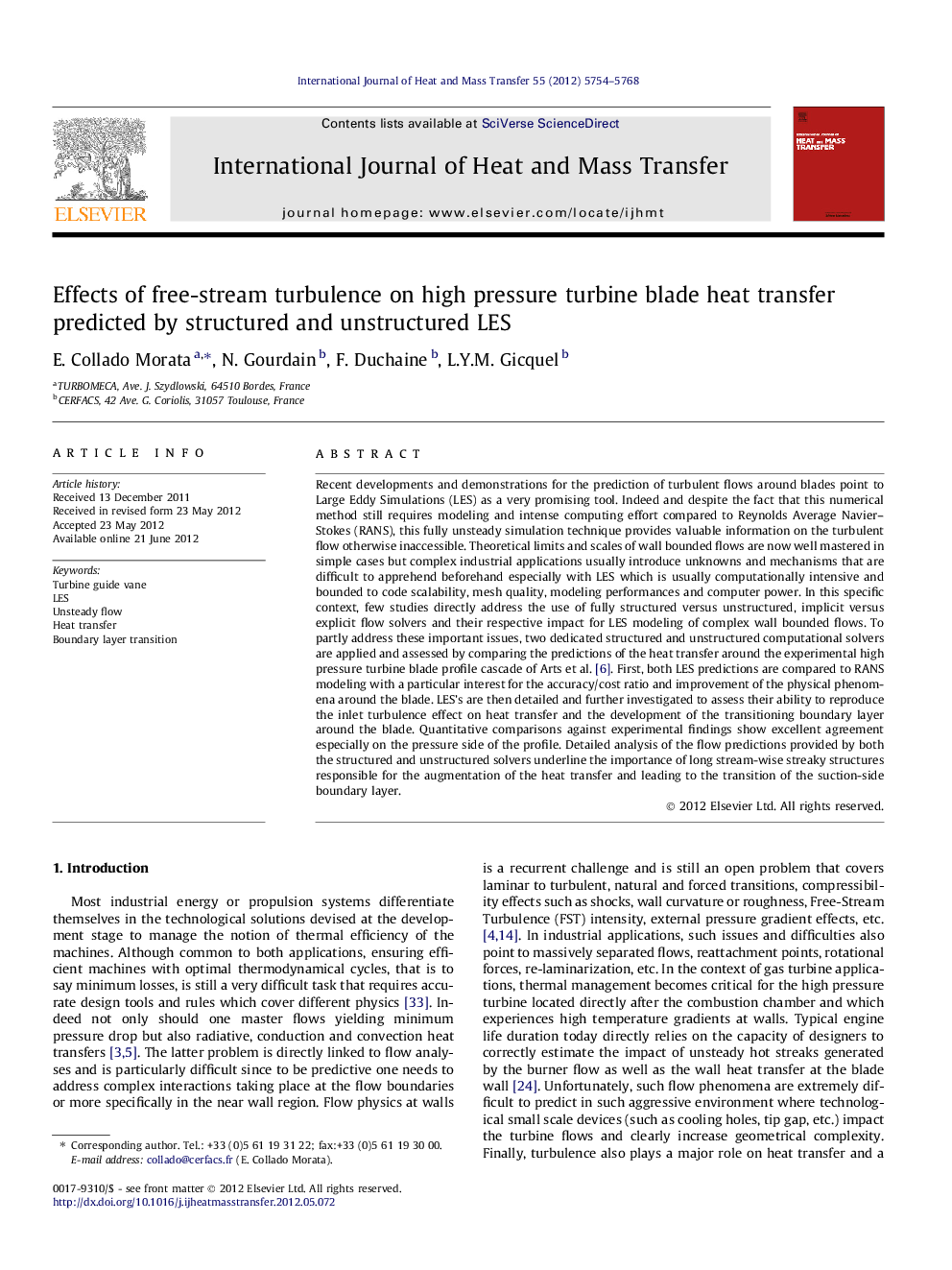| کد مقاله | کد نشریه | سال انتشار | مقاله انگلیسی | نسخه تمام متن |
|---|---|---|---|---|
| 659137 | 1458090 | 2012 | 15 صفحه PDF | دانلود رایگان |

Recent developments and demonstrations for the prediction of turbulent flows around blades point to Large Eddy Simulations (LES) as a very promising tool. Indeed and despite the fact that this numerical method still requires modeling and intense computing effort compared to Reynolds Average Navier–Stokes (RANS), this fully unsteady simulation technique provides valuable information on the turbulent flow otherwise inaccessible. Theoretical limits and scales of wall bounded flows are now well mastered in simple cases but complex industrial applications usually introduce unknowns and mechanisms that are difficult to apprehend beforehand especially with LES which is usually computationally intensive and bounded to code scalability, mesh quality, modeling performances and computer power. In this specific context, few studies directly address the use of fully structured versus unstructured, implicit versus explicit flow solvers and their respective impact for LES modeling of complex wall bounded flows. To partly address these important issues, two dedicated structured and unstructured computational solvers are applied and assessed by comparing the predictions of the heat transfer around the experimental high pressure turbine blade profile cascade of Arts et al. [6]. First, both LES predictions are compared to RANS modeling with a particular interest for the accuracy/cost ratio and improvement of the physical phenomena around the blade. LES’s are then detailed and further investigated to assess their ability to reproduce the inlet turbulence effect on heat transfer and the development of the transitioning boundary layer around the blade. Quantitative comparisons against experimental findings show excellent agreement especially on the pressure side of the profile. Detailed analysis of the flow predictions provided by both the structured and unstructured solvers underline the importance of long stream-wise streaky structures responsible for the augmentation of the heat transfer and leading to the transition of the suction-side boundary layer.
Journal: International Journal of Heat and Mass Transfer - Volume 55, Issues 21–22, October 2012, Pages 5754–5768